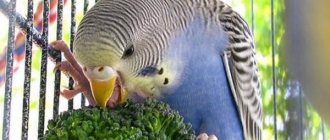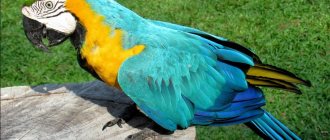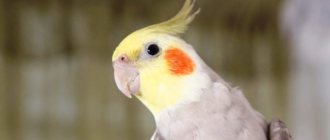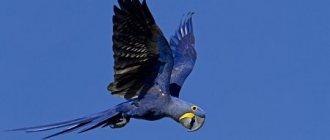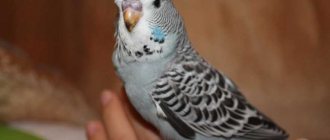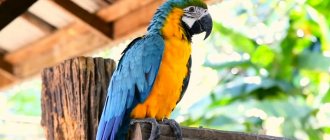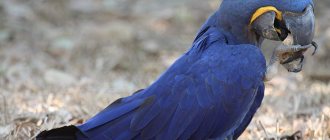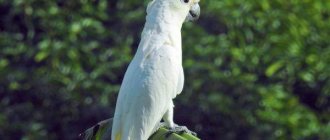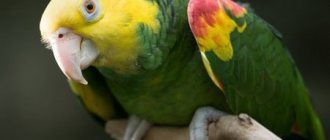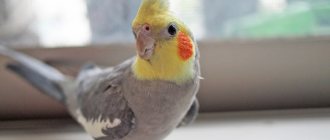How the breed was developed
The history of improving exhibition parrots began in England during the Second World War. Fleeing from the bombings, city residents moved en masse to the rural hinterlands, leaving their pets in city pet stores. In one of these, an unusual bird was first noticed, which aroused great delight and interest among the British, despite the difficult times.
How did the Czech parrot appear?
According to some reports, the breeder who left the birds received them from a pair of ordinary green voles. History says that he soon died without becoming famous during his lifetime. The breed of parrots he bred gave impetus to the creation of an English club, which subsequently dealt with the conservation and selection of this species. The Germans have achieved great success in obtaining various color variations of Czech wavy flowers.
The exhibition budgerigar was brought to the USSR from Czechoslovakia in the 80s of the last century, which is why it received the name that stuck to it - Czech.
The first exhibitions with the participation of noble birds in Russia were held only in 2011.
Read also
Food for budgerigars waka
Description
This species first appeared in England; one of the owners of the wavy birds had chicks that looked different from their parents. They had a completely different skull structure, the head was several times larger than that of representatives of the genus of budgerigars. Subsequent selection work with parrots allowed breeders to obtain a completely new breed; at the moment it is quite popular among parrot lovers and professional breeders who breed parrots for exhibitions and competitions.
The main differences between a parrot and an ordinary budgie
Czechs have a number of similarities with ordinary wavy cats. But it is precisely these differences that give them a majestic, dignified appearance, for which the bird was so loved by breeders at one time.
The main differences between the Czech parrot and the budgerigar
Let's consider the main signs of dissimilarity:
Size
This is the first thing that catches your eye when comparing two related birds. Czech is one and a half times larger than a regular wavy.
Posture
Thanks to its long keel, the bird always seems to maintain its posture, which gives it a stately, aristocratic appearance.
Wing position
The Czech budgerigar does not cross its wings behind its back, as budgerigars do, but neatly fold it on its sides.
Head
The massive head of the courageous bird is decorated with a lush crown or cap of feathers.
Beads
The brisket has bright, large, round spots called beads. There are usually at least six of them. In budgies they are small and weakly expressed.
One of the differences is the beads on the parrot's neck
Character
It is believed that the pets of the described breed are calmer, balanced, and phlegmatic than the mischievous little ones. Although it all depends on the temperament of the individual.
Activity
Due to their massive build, Czechs are less mobile and get tired faster in flight. They do not constantly run around, like their restless brothers, but walk around importantly, studying the surrounding objects.
Health
The beauty and originality of the breed was not easy for the Czechs. Selection of the species had its negative features. Due to numerous inbreeding, the exhibition budgerigar has poor health and reproductive problems.
Czech parrot health
Price
This species is difficult to breed and is demanding in caring for a budgie. This explains the high price of poultry.
Appearance
The body length of an adult parrot averages from 22 to 29 centimeters, which is one of the main differences from the wavy parrots. Thanks to active breeding work, you can purchase a parrot of almost any color. The most common colors are yellow, green, grey, lilac, blue and grey. You can also purchase a pet with several colors at once.
Features of the Czech parrot
Appearance
The exhibition budgerigar has a courageous, proud appearance. He holds himself straight and straight, like a crowned lady. Let's take a closer look at the standard of this breed.
Features of the appearance of a parrot
- The wings fit tightly to the body, close at the sacrum without crossing. Each one does not exceed 12 cm in length and has seven flight feathers.
- The bird is strongly built, has broad shoulders and a massive short neck. The body looks like an elongated drop, reaches 23-29 cm in length and is inclined to the horizon at 60 degrees.
- The chest protrudes forward, which is why the bird has an even, natural posture.
- The long tail ends in two well-developed tail feathers.
- Legs are straight and strong. They have two oppositely directed pairs of fingers ending in claws.
- The large head has a high, powerful forehead, forming a smooth arc from the base of the beak to the back of the head.
- The eyes are expressive and may be slightly hidden under the feathers of a fluffy cap.
- The beak is firmly set.
- Single-color plumage on the front of the head.
- In the standard color, the neck marks on the bushy beard are bright, perfectly round, and symmetrically located. They form beads characteristic of the Czechs. There are three of them on each side, the outer ones are partially covered by elongated zygomatic spots.
- The color matches the color scheme of the described parrot. The plumage pattern is clean, clear, and well defined. The color is uniform, without unnecessary shades.
Read also
How to determine the age of a cockatiel parrot
Character and behavior
Czechs have a calm, friendly disposition. They sing less, but due to their perseverance, they are better able to learn spoken language. In the morning, this pet will not make loud noise, but will wait for the owner to wake up.
Parrot behavior and character
Having a massive build, this species of birds gets tired faster in flight and moves sedately and leisurely. Although, due to their individual character, there are also active, mischievous individuals.
Since parents often abandon their chicks, they are hand-fed by breeders. Therefore, most Czechs are very affectionate and make good contact with people. The life expectancy of parrots with proper care is about 13-15 years.
Read also
Habits of budgerigars
Smart Features
The bird likes communication and attention. The calm character makes the show wavy an attentive student. It reproduces not only individual words, but also entire phrases. Children often get a feathered companion, because Czechs are well trained and love to play. A one-year-old animal, with proper upbringing, is capable of folding a pyramid, sorting small objects, and following commands.
Behavior
The Czech is a calm, balanced bird. He is characterized by prudence and perseverance. He will not rush around the cage, but rather sit on a perch or play on a stand. However, it is a good flyer, resilient and strong. A real exhibition Czech parrot has a dense build, eliminating excessive fidgetiness. But each has its own characteristics. There are phlegmatic people and jumpers, couch potatoes and entertainers, talkers and silent people.
Measured, even behavior in exhibition budgerigars is an advantage. A calm bird thinks better and listens more attentively to its owner. A diligent student learns new words faster. It can be taught to talk in a shorter time than a simple budgie. Even if he is not specifically taught, he listens and then copies speech and other sounds.
On a note! The Czech is very easy to tame. From birth, the chicks are surrounded by increased attention, and often they are fed by the breeder himself. In such an atmosphere, the birds grow up to be extremely friendly.
How to buy a miracle pet
Top breeders
If an ordinary wavy can be easily bought at a pet store or even at a bird market, then with the Czech parrot everything is somewhat more complicated. Aristocratic birds of pure blood can only be purchased from a breeder registered in a Russian club. Half-Czech dogs are widespread in our country and are often passed off as purebreds.
Since breeding of exhibition budgerigars began relatively recently in the history of Russia, more noble birds are easier to find abroad.
Who is better to buy a parrot from?
When choosing a little friend, you need to pay attention to the presence of a non-removable ring and documents. Only a chick that has left the house at the age of 40-50 days is considered ideal for purchase. He has not yet had time to settle down in the pack, so we are teaching him more conversation. If the baby was hand-fed, you will get an affectionate, sociable pet.
When purchasing, carefully inspect the individual. She must have all the flight feathers in place, as well as the tail feathers. You cannot listen to scammers who claim that the chick is simply small or molting. There is a risk of purchasing an old, sick parrot. The look of a healthy wavy is clear, the plumage is clean. Inspect the cloaca area especially carefully: the feathers should not be stuck together or stained with droppings.
The purebred feathered friend meets the breed standard, and its color corresponds to the declared color variation. However, the characteristics of this species are fully formed by four months; at an early age, the Czech can be confused with an ordinary budgie.
It is worth taking a parrot from a breeder
Fixed ring and cost
Due to low fertility and difficulties in breeding, such a bird cannot be cheap. A hand-fed Czech parrot registered in a Russian club costs from 5,000 rubles. Depending on the breed, color, fluffiness and pedigree, the price of a bird can reach 15,000. A ringed individual, but raised in a nest, can be purchased for 3,000 rubles. Cheaper little ones are sold without documents and a permanent ring, which makes it impossible to determine their age and blood purity.
To obtain a pedigree and participate in exhibitions in the future, the owner puts special permanent rings on his wards. The color of this item corresponds to the year the parrot was born. Additionally, it contains the unique number of the breeder, the serial number of the chick, and club data. Igor Ignatenkov
Conditions of detention
To avoid mistakes and make your pet’s life in captivity as long and comfortable as possible, you need to learn a few basic rules.
Conditions for keeping a parrot at home
Price
The main difference between wavy fish and their descendants is the possibility of acquisition and cost. The former can be purchased at any pet store, and the latter only in specialized nurseries or from professional breeders. It is very important to purchase a pet on whose leg there is the age of the bird, a specific number and information about the place of purchase.
The ring guarantees the owner that his pet was bred by professionals, she is young and will live next to her owner for many happy years. Without it, it will not be possible to form a pedigree and, as a result, perform at exhibitions. In addition, such parrots have many times fewer offspring than unbanded birds. For this reason, and also because of the small number of chicks born, the cost of a young individual can reach 20,000 rubles.
Choosing the best place
Illumination
The place where the bird's house is located should be well lit. However, you should not place the cage on a windowsill under constant exposure to direct sunlight.
The length of daylight hours is extremely important for the health and proper rest of your feathered friend. In the summer it should be about 15 hours, by winter it should gradually be reduced to 10. If a chandelier is burning in the room long after dusk or the TV is on, the cage with the pet should be covered with a thick cloth to ensure peace. If there is insufficient lighting, a blue light UV lamp is installed next to it.
Temperature and humidity
Dry air is often found in winter when heating appliances are running. The optimal level for keeping a pet is considered to be 50-60%. To moisturize, you can use a spray bottle, a wet cloth, or special electrical appliances. The parrot's cage should not be placed next to the battery.
It is necessary to maintain the correct temperature and humidity
Comfortable ambient temperature for a pet is 20-25 degrees. A reading below 18 is dangerous for birds.
Avoiding drafts
Drafts and cold air should not be allowed in the Czech room. This breed of bird has poor health and is more susceptible to colds than other bird species.
Cage and additional accessories
The optimal size of a bird house is 60x40x80cm, the minimum acceptable is 50x40x35cm. The distance between the rods should be no more than 1.5-2 cm so that the pet cannot stick its head between them.
Inside you need to place 2-3 wooden perches, an automatic drinker, and three feeders for different types of food. The bird is inquisitive and active, so it needs toys for leisure. It could be a rope, a ball, a ladder, a swing. It will be very good if you can install a special stand next to the cage in the form of a wall bars, where she can climb and occupy herself.
Understanding what kind of cage to get for a parrot and how to fill it
Conditions of detention
Before purchasing a parrot, you need to buy everything you need to keep it and create the required conditions. Let's figure out what is necessary for a Czech budgerigar.
In order for the bird to feel cozy and comfortable in the house, it needs to be provided with the following conditions:
- air temperature - from +20° to +25°С (but not lower than +18°С);
- lighting that is correctly selected in terms of intensity and duration: in winter, daylight hours should be at least 10-12 hours, in spring and summer - 15-16 hours, full-color fluorescent lamps (90 Ra, 5000-6000 K) are required for illumination;
- no drafts.
It is important to know how to care for wavy birds and what to feed them.
Diet
The diet of ordinary wavy fish and Czech fish is not very different. The main share of the diet comes from an industrial grain mixture, 50% of which is millet of different varieties. In addition to this, you need to give your parrot fruits, vegetables, and herbs every day. Once a week, pamper your pet with a boiled egg and cottage cheese. Vitamin and mineral supplements should be freely available, especially during the molting or breeding period. You can also hang sepia and chalk in the checkered pattern.
Feed and water are changed for the bird twice a day. Czechs are prone to digestive disorders, so they need to introduce new foods into their diet slowly and gradually. Greens and fruits should be washed well, it is even better to pour boiling water over them before serving. You should not offer show wavy animals fatty foods: sunflower seeds, nuts. Bread, sweet, fried or salty foods from the human table are also prohibited.
Spreading
The homeland of wavy fish is Australia. Parrots prefer to live in huge flocks, constantly wandering around the territory in search of food and water. Parrots fly very quickly, thanks to which they can fly vast distances in a short time. They prefer to stop on level places where they eat seeds. This genus of birds is very widespread throughout the continent; moreover, they are analogous to pigeons and sparrows in Europe. For breeding, they choose secluded places on the tops of trees.
Bathing and hygiene
Water treatments are recommended for Czech parrots once a week. It is better to purchase a special bathing suit for birds. Due to their poor health, these birds are more demanding of their living conditions. To prevent your pet from getting sick, you need to clean the cage twice a day and disinfect it weekly.
Exhibition budgerigar (CZECH) nursery king-parrot.ru
Education and training
The Czech parrot is well trained to talk and do tricks. But you need to exercise regularly, otherwise he will become sad and may get sick. Play time with a feathered friend should be at least 30-40 minutes. And in order for your pet to make progress in imitating human speech, it is necessary to conduct at least 20-minute lessons every day. Don’t forget to praise your little student and encourage him with treats, then his full potential will be revealed.
Owner reviews
The owners of Czech parrots speak only positively about them.
For my birthday I was given a Czech wavy. At first it seemed strange to me, since it was different in appearance from an ordinary wavy, but then I appreciated its beauty. Literally after a few months he began to repeat simple words, although I studied with him very rarely. The bird loves to communicate and is also quiet at night.
Anastasia
I specifically chose a Czech parrot for myself because I wanted to teach the bird to speak. My Gosha is very smart, as he easily remembers even complex words and entire phrases. All my friends and acquaintances admire him, and he has become a true friend to me.
Sergey
I chose the Czech parrot because of its unusual appearance. I didn't expect this bird to be so friendly and sociable. She spends time on my shoulder all the time at home and also loves it when I stroke her feathers. The only drawback is that Krosh often gets sick, so I often have to consult an ornithologist.
Christina
Diseases and their treatment
Numerous inbreedings during the breeding process affected the health of Czech parrots. They often suffer from colds. Weak immunity makes these birds vulnerable to:
- ectoparasites;
- worms;
- mycoses;
- dysbacteriosis.
The Czech budgie is a very tame budgie.
And, of course, they are more susceptible to bacterial and viral infections.
It is extremely important to implement proper preventive measures in a timely manner. Keep the bird clean and regularly inspect the plumage for insects. Individuals prone to digestive disorders can be given probiotics.
If your pet is sick, it should be immediately shown to an ornithologist. Do not self-medicate, because it is very easy for a non-specialist to make a mistake with the dosage of drugs, which can harm the parrot.
Lifespan
If you provide birds with proper care, they live from 10 to 15 years. There are examples when the wavy lived 22 years. But the average life expectancy is only 8 years.
Show parrots, like ordinary budgerigars, are monogamous, so they mate once in a lifetime. If one individual dies, the remaining birds begin to grieve and also quickly die.
Females sometimes destroy eggs or weak chicks, and also often abandon their offspring. Therefore, breeders have to feed the birds themselves, for which a probe is used. Due to such difficulties in reproduction, difficulties arise in preserving the colors of the birds.
To develop the Czech breed, breeders crossed closely related parrots. This has led to the fact that representatives of this breed are considered weak, and they often develop malformations.
